Hotline
+86-136 8495 9862
Email:cennia@szmizhi.com
Add::104,Building 27,Third Industrial Zone, Longxi Community,Longgang District,Shenzhen,China.
Coil Forming & Handling Equipment
Surface Treatment Equipment
Solutions
Application
About Us
Welcome to MIZHI
For consultation/feedback, please call the service hotline: +86-136 8495 9862 Email:cennia@szmizhi.com

What are the environmental benefits of using shot blasting machines?
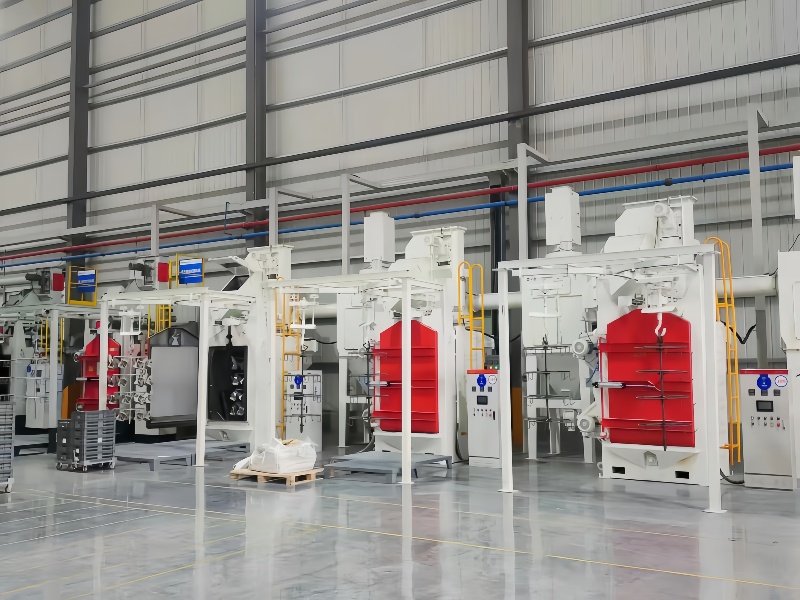
Shot blasting machines offer several significant environmental benefits, making them an eco-friendly choice for industrial surface preparation and treatment.
Here are the key advantages:
1.Reduced Chemical Usage
Shot blasting eliminates the need for harsh chemicals often used in traditional cleaning methods, such as acid pickling or chemical stripping. This reduces the risk of chemical pollution and hazardous waste generation.
2.Energy Efficiency
Modern eco-friendly shot blasting machines use energy-efficient motors, variable-speed drives, and optimized turbine designs to minimize power consumption. This not only lowers operational costs but also reduces the carbon footprint associated with the process.
3.Advanced Dust Collection Systems
These machines are equipped with high-efficiency dust collection systems that capture fine particles, preventing air pollution and protecting worker health. This ensures compliance with environmental regulations and reduces the overall environmental impact.
4.Sustainable Abrasive Recovery and Recycling
Shot blasting machines often feature automatic abrasive recovery systems that recycle used materials, reducing waste generation and lowering material costs. This sustainable practice minimizes the environmental footprint of the process.
5.Noise Reduction
Eco-friendly shot blasting machines incorporate noise reduction technologies, such as soundproof enclosures and vibration-dampening materials. This creates a safer and more comfortable work environment, reducing noise pollution.
6.Enhanced Metal Recycling
Shot blasting plays a crucial role in metal recycling by removing rust, scale, and coatings from recycled materials. This ensures high-quality reuse of metals, reduces the demand for virgin materials, and lowers energy-intensive refining processes.
7.Compliance with Environmental Regulations
By adopting eco-friendly shot blasting technologies, manufacturers can meet stringent environmental regulations, such as ISO 14001 and OSHA standards. This helps avoid penalties and supports corporate sustainability initiatives.
8.Reduced Waste Generation
Proper waste management practices, such as recycling spent abrasives and segregating hazardous materials, minimize environmental contamination. This ensures that the process is both sustainable and cost-effective.
In summary, shot blasting machines provide a range of environmental benefits, including reduced chemical usage, energy efficiency, advanced dust collection, and sustainable practices. These features make them an ideal choice for industries aiming to minimize their environmental impact while maintaining high-quality surface preparation.
Can you explain the role of shot blasting in thermal management for EV batteries?
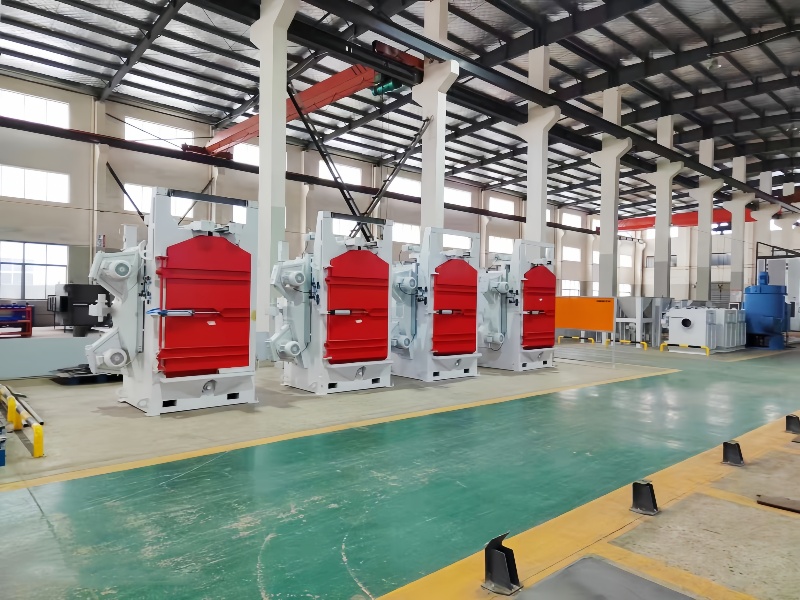
Shot blasting plays a critical role in thermal management for electric vehicle (EV) batteries by ensuring high-quality surface preparation and enhancing the performance of thermal management systems. Here’s how shot blasting contributes:
Surface Preparation for Thermal Management Components
1.Enhanced Heat Transfer Efficiency
Shot blasting is used to clean and roughen the surfaces of battery casings and cooling components, such as heat sinks and cold plates. This process improves the adhesion of thermal interface materials (TIMs) and coatings, which are essential for efficient heat transfer. By ensuring a uniform and clean surface, shot blasting helps maximize thermal conductivity and reduces thermal resistance.
2.Precision Surface Treatment
EV battery components often have complex geometries and require high precision. Shot blasting machines, especially those with robotic automation, can precisely treat these surfaces without causing damage. This precision is crucial for maintaining the structural integrity of lightweight materials like aluminum and magnesium.
Integration with Thermal Management Systems
3.Supporting Liquid Cooling Systems
Liquid cooling is a common thermal management technique in high-performance EVs. Shot blasting prepares the surfaces of cooling channels and battery casings to ensure optimal contact with the coolant. This enhances the uniformity of temperature distribution and prevents hotspots, which can degrade battery performance.
4.Enabling Phase Change Materials (PCMs)
Some EVs use PCMs to absorb and release heat passively. Shot blasting can prepare surfaces to ensure better integration of these materials, providing a stable and efficient thermal regulation environment.
5.Durability and Safety
6.Corrosion Prevention and Durability
By removing contaminants and providing a clean surface, shot blasting helps prevent corrosion on battery casings and thermal management components. This is particularly important in EVs, where components are exposed to varying environmental conditions. Preventing corrosion ensures the long-term reliability of thermal management systems.
7.Thermal Runaway Mitigation
Advanced shot blasting techniques can be used to apply intumescent coatings or create sealed cavities in battery packs. These features help contain thermal runaway events by directing hot gases and debris away from critical components.
Innovations in Shot Blasting for Thermal Management
8.Advanced Abrasive Materials
Eco-friendly and high-performance abrasives are being developed to enhance shot blasting processes. These materials can provide better surface finishes while reducing environmental impact.
9.Automated and Intelligent Systems
Modern shot blasting machines integrate with Industry 4.0 technologies, allowing for real-time monitoring and optimization of surface treatment processes. This ensures consistent quality and supports the development of next-generation thermal management systems.
In summary, shot blasting is essential for preparing surfaces of EV battery components, enhancing thermal management efficiency, and ensuring long-term durability. These processes are critical for maintaining optimal battery performance and safety in modern electric vehicles.
How does shot blasting prevent corrosion on EV battery housings?
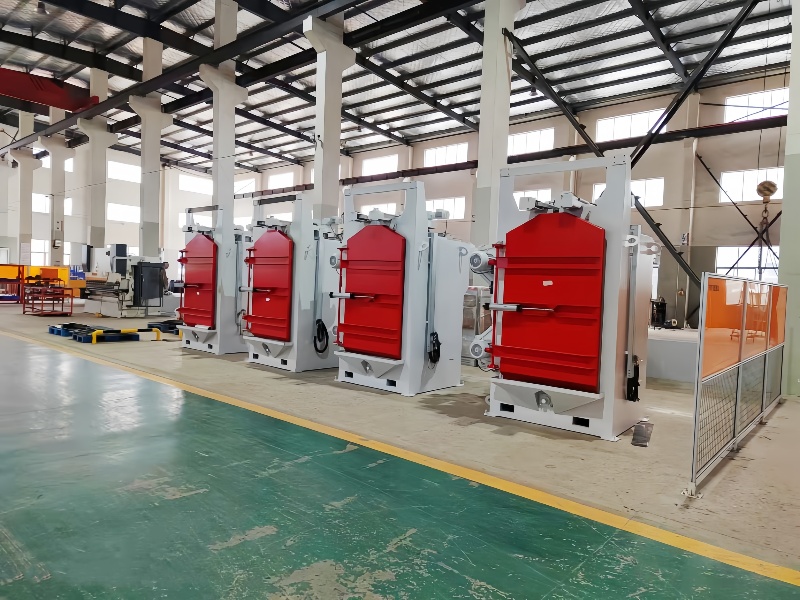
Shot blasting machines play a crucial role in preventing corrosion on electric vehicle (EV) battery housings through several mechanisms:
1.Surface Cleaning and Preparation
Shot blasting effectively removes impurities, rust, and scale from the surface of battery housings, typically made from aluminum or magnesium. This process ensures a clean and uniform surface, which is essential for the application of protective coatings.
2.Enhanced Coating Adhesion
The roughened surface created by shot blasting improves the adhesion of anti-corrosion coatings, such as conversion coatings (e.g., CHEMEON eTCP) or powder coatings. These coatings form a protective barrier against corrosive elements, significantly enhancing the durability of the battery housing.
3.Stress Relief and Surface Hardening
Shot blasting can induce a compressive stress layer on the surface of metal components, which helps to relieve internal stresses and improve the material’s resistance to fatigue and corrosion. This is particularly important for thin-walled and complex designs used in EV battery housings.
4.Gentle but Effective Treatment
Modern shot blasting machines are designed to handle delicate components gently, preventing deformation or warping. This is crucial for lightweight materials like aluminum, which are commonly used in EVs to reduce weight and improve battery range.
5.Integration with Coating Technologies
Shot blasting is often integrated with advanced coating technologies to provide comprehensive corrosion protection. For example, CHEMEON eTCP is a bare metal conversion coating that forms a passivating layer on aluminum, enhancing its natural oxide layer and providing a superior base for further coatings.
6.Preventing Electrical Failures
Corrosion can lead to electrical failures by increasing resistance and causing overheating. By removing contaminants and providing a clean surface, shot blasting helps maintain the electrical integrity of the battery housing, reducing the risk of such failures.
7.Environmental Protection
Shot blasting machines are often equipped with advanced dust collection systems, ensuring that the process is environmentally friendly and compliant with strict regulations. This is particularly important for the EV industry, which emphasizes sustainability.
In summary, shot blasting machines contribute significantly to the corrosion prevention of EV battery housings by providing a clean surface, enhancing coating adhesion, and integrating with advanced protective technologies. These processes are essential for ensuring the durability, safety, and longevity of EV battery systems.
What are the key factors driving the growth of the shot blasting machine market?
1. Surface Preparation for Manufacturing
Pre-treatment Processes: In automotive manufacturing, shot blasting machines are crucial for surface preparation. They are used to clean, degrease, and remove rust or scale from metal components such as car bodies, engine parts, and transmission components. This ensures that surfaces are free from contaminants and ready for coating or painting.
Enhanced Adhesion: Shot blasting creates a roughened surface that enhances the adhesion of paint, primer, or other coatings. This is essential for the durability and corrosion resistance of automotive parts.
2. Precision and Quality Control
High-Precision Requirements: The automotive industry demands high precision and consistency in surface treatment. Shot blasting machines, especially those with advanced technologies like robotic automation and AI-driven controls, can deliver the required accuracy and repeatability.
Quality Standards: Compliance with stringent quality standards (e.g., ISO certifications) necessitates the use of reliable and efficient shot blasting machines. This drives the adoption of advanced equipment that can meet these requirements.
3. Increased Production Volume
Growth in Automotive Production: The global automotive industry, particularly in emerging markets like China, India, and Southeast Asia, is experiencing steady growth. Increased production volumes require more efficient and scalable shot blasting solutions to meet manufacturing demands.
Electric Vehicle (EV) Boom: The rapid expansion of the EV market introduces new challenges and opportunities. EV components often require specialized surface treatments due to their high-precision nature and the need for lightweight materials. This drives the demand for advanced shot blasting machines.
4. Maintenance and Refurbishment
Aftermarket Demand: The automotive aftermarket also contributes to the demand for shot blasting machines. Repair shops and refurbishment centers use these machines to restore and clean used parts, such as engines, transmissions, and chassis components.
Longevity of Vehicles: With an increasing focus on vehicle longevity and sustainability, shot blasting machines are used to extend the life of automotive parts by removing rust and corrosion, allowing for reconditioning and reuse.
5. Environmental and Regulatory Compliance
Eco-Friendly Solutions: The automotive industry is under increasing pressure to adopt environmentally friendly practices. This has led to the adoption of shot blasting machines with advanced dust collection systems and recyclable abrasives, which reduce environmental impact.
Regulatory Standards: Compliance with emissions and waste disposal regulations drives the need for more efficient and sustainable shot blasting technologies. This, in turn, supports the growth of the shot blasting machine market.
6. Technological Advancements
Automation and Integration: The automotive industry is at the forefront of adopting advanced manufacturing technologies. Shot blasting machines equipped with IoT capabilities, predictive maintenance systems, and robotic automation are increasingly preferred for their ability to integrate seamlessly into modern production lines.
Innovative Abrasives: The development of new, more efficient abrasives tailored for automotive applications is driving demand. These abrasives offer better performance, longer life, and reduced environmental impact.
7. Economic Impact
Investment in Manufacturing: The automotive industry is a major driver of industrial investment. Companies continuously invest in new manufacturing facilities and equipment upgrades, which includes the adoption of advanced shot blasting machines.
Job Creation: The demand for shot blasting machines in the automotive sector also creates employment opportunities in manufacturing, maintenance, and service industries, further boosting economic growth.
Conclusion
The automotive industry's demand for shot blasting machines is driven by the need for high precision, efficient surface treatment, and compliance with environmental and quality standards. As the automotive sector continues to grow, particularly with the expansion of electric vehicles, the demand for advanced shot blasting solutions is expected to remain strong. This will continue to drive the development and adoption of new technologies, further fueling the growth of the shot blasting machine market.
What are the key factors driving the growth of the shot blasting machine market?

The growth of the shot blasting machine market is driven by several key factors:
1. Rising Demand from the Automotive Industry: The booming automotive sector, including the increasing adoption of electric vehicles, drives the need for shot blasting machines to remove stress on metal plates and provide anti-rust treatment. This is a major factor boosting the market demand globally.
2. Increasing Construction Activities: Shot blasting machines are widely used in construction for cleaning and preparing metal surfaces. The growth in new construction projects and investments in infrastructure development is fueling the demand for these machines.
3. Technological Innovations: The integration of advanced technologies such as AI-driven predictive maintenance, IoT for real-time monitoring, and robotic solutions is enhancing the efficiency and performance of shot blasting machines. These innovations are making the machines more reliable and cost-effective.
4. Environmental and Sustainability Focus: The adoption of eco-friendly practices, such as recyclable abrasives and high-efficiency dust collection systems, is becoming more prevalent. This shift towards sustainable solutions is driving market growth.
5. Expansion of the Aerospace Sector: The aerospace industry requires high-precision surface treatment for manufacturing and repairing components. The growth in this sector is creating new opportunities for shot blasting machines.
6. Infrastructure Investments: Government and private investments in infrastructure projects, such as transportation networks and renewable energy facilities, are driving the demand for shot blasting machines in construction and maintenance.
7. Automation and Robotics: The increasing use of automated and robotic shot blasting solutions is improving efficiency and reducing labor costs. This trend is particularly evident in industries like automotive, marine, and locomotive.
8. Market Expansion in Asia-Pacific: The rapid industrialization and infrastructure development in regions like China and India are propelling market growth. The Asia-Pacific region is expected to remain a dominant market for shot blasting machines.
9. Specialized Applications: The need for specialized shot blasting services, such as underwater blasting and precision blasting for sensitive environments, is creating niche market opportunities.
10. Regulatory Compliance: Stricter environmental and safety regulations are prompting industries to adopt advanced shot blasting technologies that meet compliance standards. This is driving the demand for more efficient and eco-friendly machines.
These factors collectively contribute to the projected growth of the shot blasting machine market, with a CAGR of 5.1% from 2024 to 2030.
What are the typical applications for a high-speed fly shearing machine?
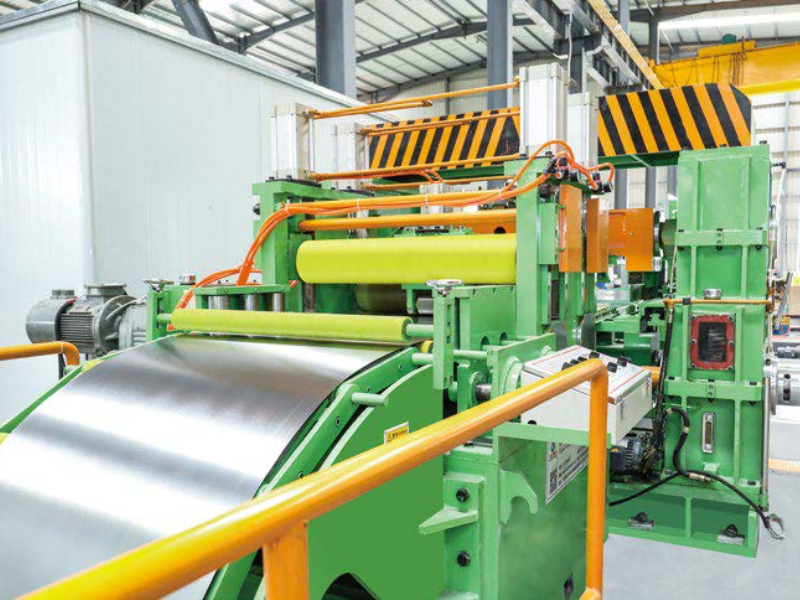
High-speed fly shearing machines have a wide range of applications across various industries, with the primary function of cutting continuous materials into predefined lengths at line speed without interrupting the production process. Here are some typical applications for high-speed fly shearing machines:
1.Steel Industry: In steel mills, flying shear machines are crucial for cutting steel at high speed and accuracy to meet predetermined length and specification requirements. They are used for hot-rolled strip, cold-rolled strip, and wire shearing, improving production efficiency and ensuring dimensional accuracy and appearance quality of steel.
2.Automotive Industry: High-speed fly shearing machines are used for cutting steel plates or strips to specified lengths, which are essential for the production of automotive parts where precision and consistency are required.
3.Metal Processing: These machines are used for cutting medium and small steel billets, thin slab billets, small section steel (bar), and hot-rolled and cold-rolled strip steel (including coated steel).
4.Printing Industry: In the printing industry, flying shears are used for cutting various types of print materials to length, ensuring precise and efficient cutting without stopping the printing process.
5.Packaging Industry: High-speed fly shearing machines are employed in the packaging industry for cutting packaging materials to specific lengths, which is crucial for the production of packaging boxes, bags, and other items.
6.Cardboard Processing: In the cardboard processing industry, these machines are used for cutting cardboard to length, which is essential for the production of corrugated boxes and other packaging materials.
7.Metal Sheet Processing: Flying shears are important in metal sheet processing, performing online shearing of metal sheets on high-speed production lines, avoiding downtime and manual intervention associated with traditional shearing methods.
8.Custom Shearing: Flying shears can also perform custom shearing, cutting metal materials into specific shapes and sizes based on customer requirements, meeting the specific needs of various industries.
9.Bar and Rod Shearing: In the production of bar and rod materials (such as rebar and steel pipes), flying shears cut continuous bar materials to specified lengths for convenient packaging and transportation.
These applications highlight the versatility and importance of high-speed fly shearing machines in various industrial sectors, where high productivity, precision, and efficiency are paramount.
What is high speed fly shearing machine?

A High Speed Fly Shearing Machine is an industrial equipment used for cutting metal sheets, coils, or other materials to precise lengths at high speeds without interrupting the production process. Here are some key features and specifications of high-speed fly shearing machines based on the provided search results:
1.Non-Stop Cutting: High Speed Fly Shearing Machines, also known as Flying Shears, perform continuous cutting without stopping the material flow, which maximizes productivity and efficiency .
2.Servo System: These machines often incorporate servo driving systems to achieve stable and efficient performance, with production speeds that can reach up to 60 meters per minute.
3.Material Range: They are capable of processing various materials, including copper coils, aluminum coils, stainless steel coils, and galvanized coils .
4.Thickness and Width: The machines can handle materials with thicknesses ranging from 0.18 mm to 2.5 mm and widths from 300 mm to 1250 mm (or even 1600 mm in some models) .
5.Coil Weight: High Speed Fly Shearing Machines are designed to handle heavy coils, with capacities up to 20 tons (or even 25 tons in some cases) .
6.Cutting Accuracy: These machines provide high cutting accuracy, typically within ±0.5 mm, ensuring that the cut pieces meet strict dimensional requirements .
7.Line Speed: The operational speed of these lines can range from 70 to 100 meters per minute, depending on the model and application .
8.PLC Control: Many high-speed fly shearing machines use PLC (Programmable Logic Controller) automatic control systems for precise operation and ease of use .
9.Applications: They are widely used in various industries such as steel processing, printing, packaging, and cardboard processing, where high-precision cutting at line speed is required .
10.Features: High Speed Fly Shearing Machines offer features like electronic camming functionality, high-performance motion control networks, and the ability to handle multiple cut modes, ensuring accurate cutting for cut-to-length as well as cut-to-registration on the material's registration mark .
11.Technical Process: The process involves components such as an uncoiling and leveling mechanism, feeding roller mechanism, measuring roller mechanism, cutter shaft mechanism, and conveyor belt mechanism, all working in tandem to achieve high-speed, high-precision cutting .
12.System Topology: The control system of a high-speed fly shear is composed of various components, including a motion controller, touch screen, and multiple inverters for different functions, allowing for high-speed operation while ensuring stable cutting accuracy .
These machines are crucial for industries that require high throughput and precision in cutting materials to length, ensuring efficiency and quality in production processes.
How does a Leveling Cutting Line improve the quality of metal sheets for automotive parts?
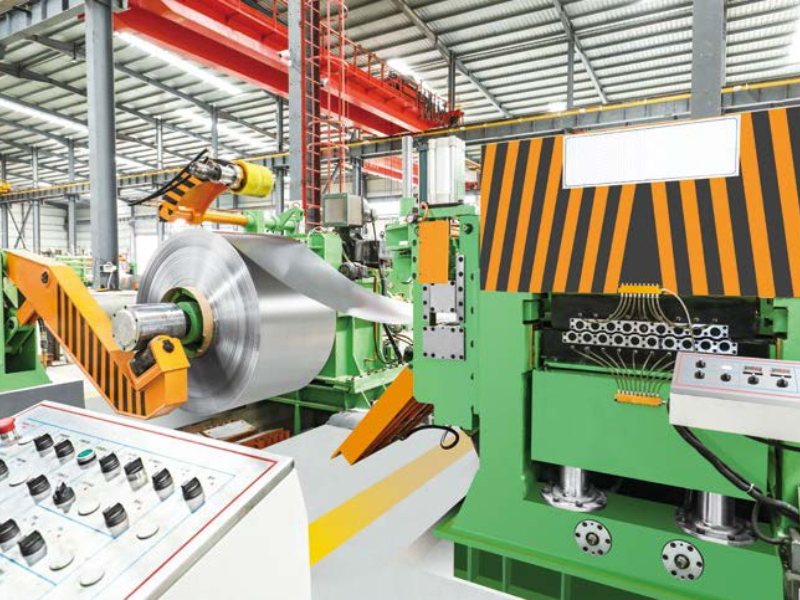
A Leveling Cutting Line plays a crucial role in improving the quality of metal sheets for automotive parts by addressing several key aspects of the metal processing:
1.High Surface Quality: Leveling Cutting Lines are designed to produce metal sheets with a high surface quality, which is especially important when processing delicate metals like stainless steel, O5 steel, aluminum, or other materials used in automotive applications.
This high surface quality is essential for parts that require a smooth finish and resistance to corrosion.
2.Optimal Flattening: These lines ensure optimal flattening of the metal sheets, measured in I-units, which is vital for achieving uniform thickness and flatness across the entire surface of the sheet.This is important for automotive parts that require precise fit and function.
3.Burr-Free Cutting Quality: The cutting process in a Leveling Cutting Line results in burr-free edges, which is crucial for the quality of the final automotive part. Burrs can cause issues during assembly and can also be a source of stress concentration, leading to potential failure points in the part.
4.Stacking with Perfect Geometry: The packages of cut metal sheets are stacked without shocks or marks, ensuring that each sheet is protected and ready for further processing or assembly in the automotive manufacturing process.
5.High Degree of Automation: Leveling Cutting Lines for the automotive sector are highly automated, which increases productivity and reliability. This automation ensures consistent quality and reduces the potential for human error during the leveling and cutting processes.
6.Specialized Equipment for High-Strength Steels: For high-strength steels (HSS) and ultra-high strength steels (UHSS) used in modern automotive manufacturing, Leveling Cutting Lines are equipped with special systems like the TDDS® (Torque Dynamic Distribution System) that can handle the internal tensions of these materials, ensuring perfect leveling quality.
7.Narrow Tolerances: The lines are designed to meet the narrow tolerances of sheet dimensions demanded by automotive manufacturers, which is essential for the precise fit and function of parts in the vehicle.
8.Material Efficiency: By ensuring that the metal sheets are flat and free of internal stresses, Leveling Cutting Lines contribute to material efficiency in the manufacturing process. This can reduce waste and improve the yield from each coil of metal, which is particularly important for cost-effective production in the automotive industry.
9.Preparation for Subsequent Processes: The flat, stress-free sheets produced by Leveling Cutting Lines are ideal for subsequent processes such as bending, welding, painting, or electroplating. These processes run more reliably and precisely with perfectly prepared sheets, leading to higher quality automotive parts.
In summary, Leveling Cutting Lines improve the quality of metal sheets for automotive parts by ensuring high surface quality, optimal flattening, burr-free cutting, precise dimensions, and material efficiency, all of which are critical for the production of high-quality, reliable, and safe automotive components.
What is Leveling Cutting Line?
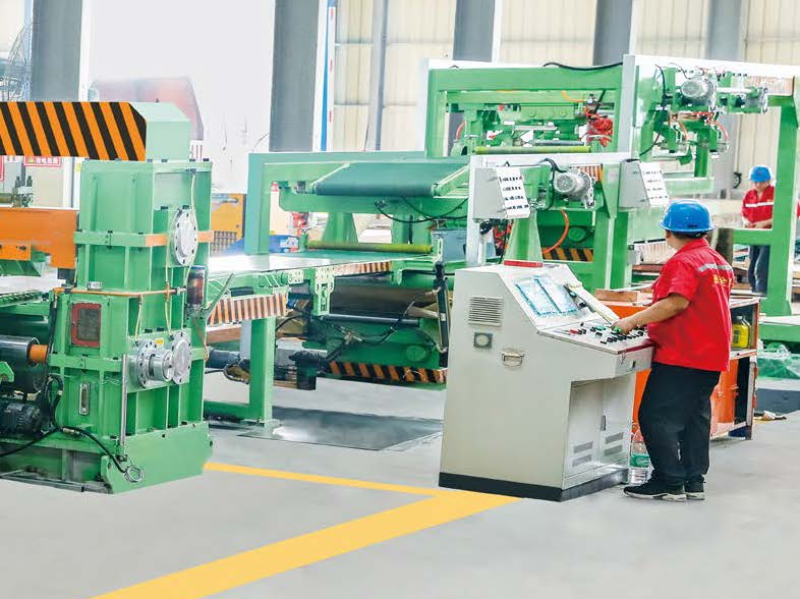
A Leveling Cutting Line is a type of metal processing equipment used to improve the flatness of metal sheets or coils and then cut them into specified lengths. Here's a detailed explanation of its functions and importance:
1.Functionality: The primary function of a Leveling Cutting Line is to take metal coils, level them to ensure uniform flatness, and then cut them into sheets of precise lengths. This process is essential for producing high-quality, flat metal sheets that can be used in various manufacturing applications, such as automotive, construction, and appliance manufacturing.
2.Components: A typical Leveling Cutting Line includes an uncoiling machine, a leveling machine, a cutting machine (often a flying shear or a hydraulic shear), a stacking machine, and a control system. Some lines may also include a material handling system for automated operation.
3.Leveling Process: During the leveling process, the metal is passed through a series of rollers that correct any curvature or waviness in the material. This step is crucial for achieving a uniform surface and ensuring that the final cut pieces have the required flatness and dimensional accuracy.
4.Cutting Process: After leveling, the material is cut to the desired length using a high-speed cutting mechanism. This can be done with a flying shear, which cuts the material while it is moving, or a hydraulic shear, which cuts the material after it has stopped.
5.Stacking: Once the material has been cut to length, it is typically stacked neatly for easy handling and transportation. This can be done manually or with an automated stacking system.
6.Automation and Precision: Modern Leveling Cutting Lines are often equipped with PLC (Programmable Logic Controller) systems for automated operation and precise control over the leveling and cutting processes. This ensures high productivity and consistent quality.
7.Applications: These lines are used in industries that require flat metal sheets with precise dimensions, such as for manufacturing parts that need to fit together perfectly or for applications where the flatness of the material is critical to the performance of the final product.
8.Quality Assurance: Leveling Cutting Lines help ensure that the metal sheets meet strict quality standards by correcting any imperfections in the material and cutting them to precise lengths.
In summary, a Leveling Cutting Line is an essential piece of equipment in the metal processing industry, providing a means to achieve flat, accurately sized metal sheets that are ready for further manufacturing processes.
How does it ensure such high precision in cutting?
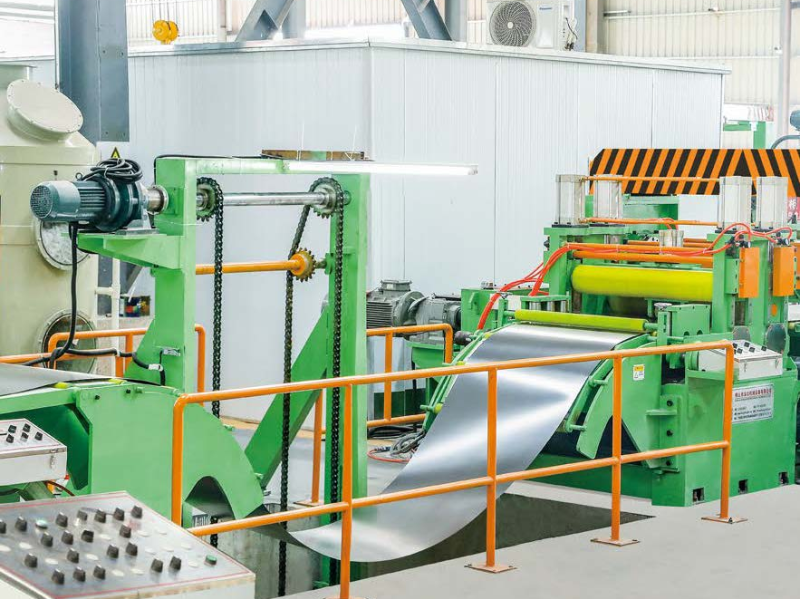
High Speed Fly Shear Machine Lines ensure high precision in cutting through several key mechanisms and technologies:
1.Advanced Control Systems: These lines are equipped with PLC (Programmable Logic Controller) and CNC (Computer Numerical Control) systems that offer precise length cutting with minimal tolerance. These systems are designed to control the cutting process with high accuracy, ensuring that each cut is made to the exact specifications required.
2.High-Speed Cutting Technology: The fly shear technology used in these lines allows for continuous operation, which means the cutting process can occur without stopping the material feed. This results in a significant increase in production efficiency and allows for faster cutting speeds while maintaining precision.
3.Rotary Shear Cutting: The rotary shear cuts the material in a single, fast stroke, which is particularly suitable for thin sheets. The sheet runs at a stable speed, and the rotary shear rotates to cut off a sheet in a cycle under closed-loop length feedback. This method can achieve a high cutting frequency, up to 150 times per minute, with linear production speeds up to 80 meters per minute
4.Leveling Technology: The incorporation of the latest leveling technology reduces the occurrence of buckling that may arise with traditional leveling methods. This ensures that the material is properly aligned and tensioned before cutting, which contributes to the precision of the cut.
5.High-Quality Components: The use of top-tier components such as German brand Flender gearboxes and advanced electrical control systems from Siemens and Bosch Rexroth enhances the cutting accuracy and speed, surpassing that of typical equipment.
6.Digital Drive Technology: Modern High Speed Fly Shear Machine Lines use digital drives instead of the traditional analog connection between the CNC and drives. Digital control technology is used to control the position, speed, and torque of the motor, with measuring systems reporting the actual position of the axes very accurately. This increases productivity and tool accuracy through complex control algorithms that minimize contour errors and machine rigidity problems.
7.Look Ahead Feedrate Control: Modern CNC systems for high-speed machining use look ahead feedrate control, which identifies irregular block transitions and excessive axis acceleration caused by path curvature. This control strategy eliminates contour error and ensures greater path accuracy at high tool path feedrates.
8.High-Resolution Digital Monitoring: Digital drive control supports high-resolution digital speed and path monitoring, which is crucial for maintaining precision during high-speed operations.
9.Compensation of Mechanically Induced Errors: High Speed Fly Shear Machine Lines are capable of compensating for mechanically induced errors, which can affect the precision of the cut. This compensation ensures that the final product meets the required specifications.
These features and technologies work together to ensure that High Speed Fly Shear Machine Lines can achieve high precision in cutting, which is essential for maintaining product quality and efficiency in various industrial applications.